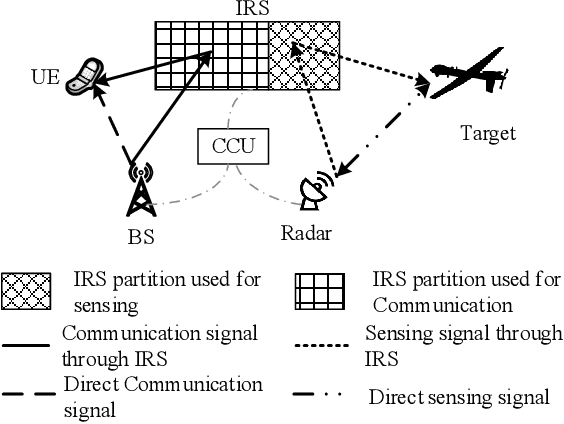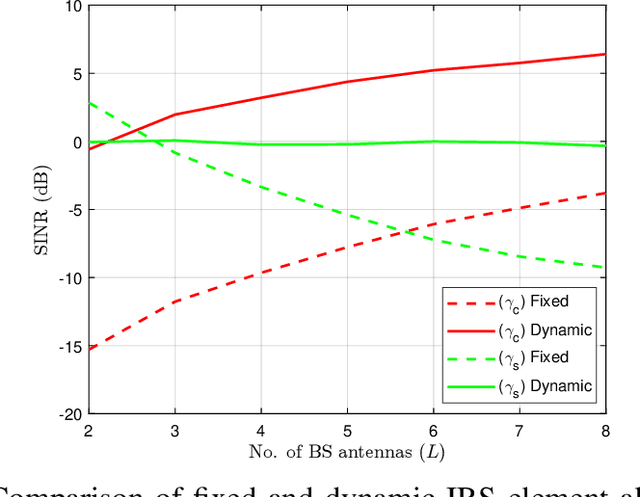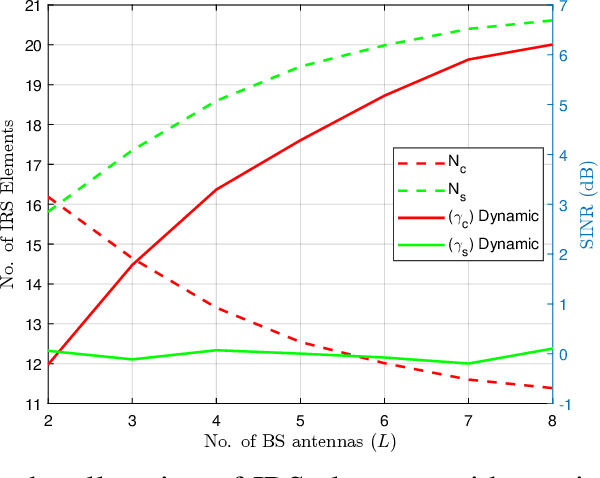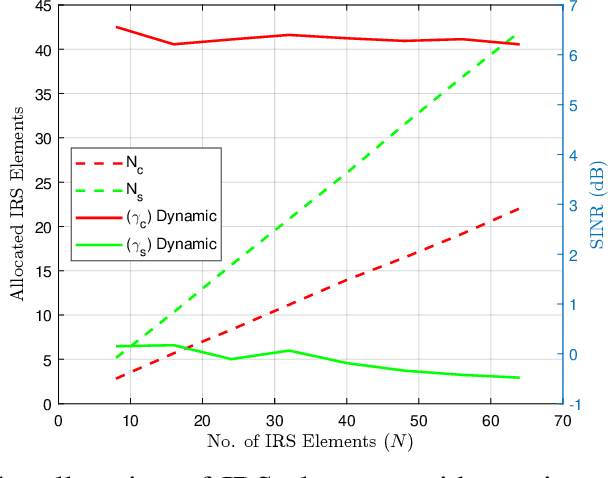Hans D. Schotten
Rheinland-Pfälzische Technische Universität Kaiserslautern-Landau, Deutsches Forschungszentrum für Künstliche Intelligenz
What is the Most Efficient Technique for Uplink Cell-Free Massive MIMO?
Aug 28, 2025Abstract:This paper seeks to determine the most efficient uplink technique for cell-free massive MIMO systems. Despite offering great advances, existing works suffer from fragmented methodologies and inconsistent assumptions (e.g., single- vs. multi-antenna access points, ideal vs. spatially correlated channels). To address these limitations, we: (1) establish a unified analytical framework compatible with centralized/distributed processing and diverse combining schemes; (2) develop a universal optimization strategy for max-min power control; and (3) conduct a holistic study among four critical metrics: worst-case user spectral efficiency (fairness), system capacity, fronthaul signaling, and computational complexity. Through analyses and evaluation, this work ultimately identifies the optimal uplink technique for practical cell-free deployments.
Wideband Coplanar Waveguide MIMO Antenna for 6G Millimeter-Wave Applications with Defected Ground Structure
Aug 12, 2025Abstract:This research study introduces a novel small antenna with wideband capacity for the higher frequency range. As a possible contender for 6G wireless networks, the proposed antenna is designed to target the 6G Millimeter-Wave (mmWave) operating bands spanning 25 GHz to 33.5 GHz. With a microstrip patch structure fed by a coplanar waveguide (CPW) with the defected ground structure (DGS), a single antenna is introduced and then a design of 2 x 2 MIMO antenna is presented. The single antenna has 2 elements, while the 2 x 2 MIMO antenna has 8 elements. It achieves remarkably well in terms of return loss of 8.5 GHz wideband, which is anticipated to be used for several applications in 6G mmWave technology.
MALRIS: Malicious Hardware in RIS-Assisted Wireless Communications
Aug 08, 2025Abstract:Reconfigurable intelligent surfaces (RIS) enhance wireless communication by dynamically shaping the propagation environment, but their integration introduces hardware-level security risks. This paper presents the concept of Malicious RIS (MALRIS), where compromised components behave adversarially, even under passive operation. The focus of this work is on practical threats such as manufacturing time tampering, malicious firmware, and partial element control. Two representative attacks, power-splitting and element-splitting, are modeled to assess their impact. Simulations in a RIS-assisted system reveal that even a limited hardware compromise can significantly degrade performance metrics such as bit error rate, throughput, and secrecy metrics. By exposing this overlooked threat surface, this work aims to promote awareness and support secure, trustworthy RIS deployment in future wireless networks.
Lightweight Node Selection in Hexagonal Grid Topology for TDoA-Based UAV Localization
Jun 17, 2025Abstract:This paper investigates the optimization problem for TDoA-based UAV localization in low-altitude urban environments with hexagonal grid node deployment. We derive a lightweight optimized node selection strategy based on only RSSI measurements, to pre-select optimal nodes, avoiding extensive TDoA measurements in energy-constrained UAV scenarios. Theoretical and simulation results demonstrate that dynamically selecting the number of reference nodes improves localization performance while minimizing resource overhead.
Implementation Analysis of Collaborative Robot Digital Twins in Physics Engines
Apr 28, 2025Abstract:This paper presents a Digital Twin (DT) of a 6G communications system testbed that integrates two robotic manipulators with a high-precision optical infrared tracking system in Unreal Engine 5. Practical details of the setup and implementation insights provide valuable guidance for users aiming to replicate such systems, an endeavor that is crucial to advancing DT applications within the scientific community. Key topics discussed include video streaming, integration within the Robot Operating System 2 (ROS 2), and bidirectional communication. The insights provided are intended to support the development and deployment of DTs in robotics and automation research.
Trajectory Planning with Model Predictive Control for Obstacle Avoidance Considering Prediction Uncertainty
Apr 27, 2025Abstract:This paper introduces a novel trajectory planner for autonomous robots, specifically designed to enhance navigation by incorporating dynamic obstacle avoidance within the Robot Operating System 2 (ROS2) and Navigation 2 (Nav2) framework. The proposed method utilizes Model Predictive Control (MPC) with a focus on handling the uncertainties associated with the movement prediction of dynamic obstacles. Unlike existing Nav2 trajectory planners which primarily deal with static obstacles or react to the current position of dynamic obstacles, this planner predicts future obstacle positions using a stochastic Vector Auto-Regressive Model (VAR). The obstacles' future positions are represented by probability distributions, and collision avoidance is achieved through constraints based on the Mahalanobis distance, ensuring the robot avoids regions where obstacles are likely to be. This approach considers the robot's kinodynamic constraints, enabling it to track a reference path while adapting to real-time changes in the environment. The paper details the implementation, including obstacle prediction, tracking, and the construction of feasible sets for MPC. Simulation results in a Gazebo environment demonstrate the effectiveness of this method in scenarios where robots must navigate around each other, showing improved collision avoidance capabilities.
How Cyclic Acoustic Patterns Influence ASMR Perception: A Signal Processing Perspective
Apr 02, 2025



Abstract:Autonomous Sensory Meridian Response (ASMR) has been remarkably popular in the recent decade. While its effect has been validated through behavioral studies and neuro-physiological measurements such as electroencephalography (EEG) and related bio-signal analyses, its development and triggers remain a subject of debate. Previous studies suggest that its triggers are highly linked with cyclic patterns: predictable patterns introduce relaxation while variations maintain intrigue. To validate this and further understand the impact of acoustic features on ASMR effects, we designed three distinct cyclic patterns with monophonic and stereophonic variations, while controlling their predictability and randomness, and collected ASMR triggering scores through online surveys. Then, we extracted cyclic features and carried out regression analysis, seeking an explainable mapping of cyclic features and ASMR triggers. We found that relaxing effects accumulate progressively and are independent of spatial orientation. Cyclic patterns significantly influence psychological and physical effects, which remain invariant with time. Regression analysis revealed that smoothly spread and energy-dense cyclic patterns most effectively trigger ASMR responses.
Buyer-Initiated Auction Mechanism for Data Redemption in Machine Unlearning
Apr 01, 2025



Abstract:The rapid growth of artificial intelligence (AI) has raised privacy concerns over user data, leading to regulations like the General Data Protection Regulation (GDPR) and the California Consumer Privacy Act (CCPA). With the essential toolbox provided by machine unlearning, AI service providers are now able to remove user data from their trained models as well as the training datasets, so as to comply with such regulations. However, extensive data redemption can be costly and degrade model accuracy. To balance the cost of unlearning and the privacy protection, we propose a buyer-initiated auction mechanism for data redemption, enabling the service provider to purchase data from willing users with appropriate compensation. This approach does not require the server to have any a priori knowledge about the users' privacy preference, and provides an efficient solution for maximizing the social welfare in the investigated problem.
Dynamic IRS Allocation for Spectrum-Sharing MIMO Communication and Radar Systems
Mar 15, 2025



Abstract:This paper investigates the use of intelligent reflecting surfaces (IRS) to assist cellular communications and radar sensing operations in a communications and sensing setup. The IRS dynamically allocates reflecting elements to simultaneously localize a target and assist a user's communication. To achieve this, we propose a novel optimization framework that jointly addresses beamforming design and IRS element allocation. Specifically, we formulate a Weighted Minimum Mean Square Error (WMMSE)-based approach that iteratively optimizes the transmit and receive beamforming vectors, IRS phase shifts, and element allocation. The allocation mechanism adaptively balances the number of IRS elements dedicated to communication and sensing subsystems by leveraging the signal-to-noise-plus-interference-ratio (SINR) between the two. The proposed solution ensures efficient resource utilization while maintaining performance trade-offs. Numerical results demonstrate significant improvements in both communication and sensing SINRs under varying system parameters.
Privacy Protection Framework against Unauthorized Sensing in the 5.8 GHz ISM Band
Nov 08, 2024Abstract:Unauthorized sensing activities pose an increasing threat to individual privacy, particularly in the industrial, scientific, and medical (ISM) band where regulatory frameworks remain limited. This paper presents a novel signal process methodology to monitor and counter unauthorized sensing activities. Specifically, we model the pedestrian trajectories as a random process. Then, we leverage the Cram\'er-Rao bound (CRB) to evaluate sensing performance and model it as sampling error of such a random process. Through simulation, we verify the accuracy of monitoring unauthorized sensing activities in urban scenarios, and validate the effectiveness of corresponding mitigation strategies.
 Add to Chrome
Add to Chrome Add to Firefox
Add to Firefox Add to Edge
Add to Edge